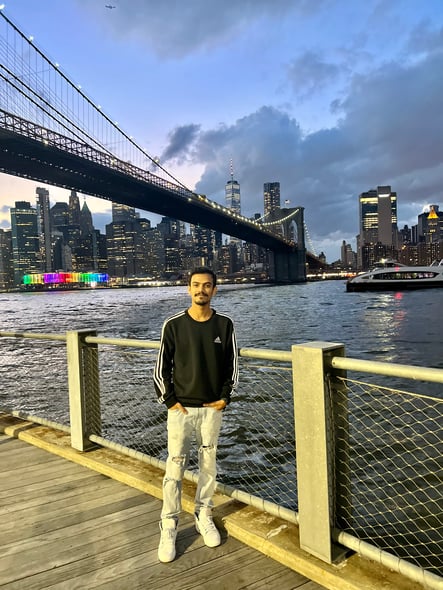Applying Data Science to Healthcare
 One of the key experiences during one's time as a graduate is working as an intern. Gaining work experience is the foundation to boosting employability, especially as a master’s student. After landing an internship as Data Science and Visualization Intern at Purview this past Summer, I couldn't wait to experience the professional world.
One of the key experiences during one's time as a graduate is working as an intern. Gaining work experience is the foundation to boosting employability, especially as a master’s student. After landing an internship as Data Science and Visualization Intern at Purview this past Summer, I couldn't wait to experience the professional world.
Today, as my internship comes to a close, I feel it was one of the best decisions I could have made to start my career off right. This internship has helped me to expand my perspectives, has enhanced my personal and professional skills, and has encouraged me to apply my academic knowledge, ideas, and theories to solve real-world problems that the healthcare industry is grappling with.
One of the most critical parts of this internship included learning how to handle health data. I was introduced to HIPAA, the Health Insurance Portability and Accountability Act, a federal law that required the creation of national standards to protect sensitive patient health information. Purview takes data privacy very seriously and sponsored me to receive HIPAA certification, encouraging me to put into practice what I was learning.
This knowledge and training surrounding the careful treatment of personal data will impact all of my work in the future, regardless of whether I am working with health data. Protecting data privacy is an important public issue globally as apps and devices will continue to accumulate and track our personal data more and more each day. As an emerging data scientist, I feel that I share a major responsibility with my peers and colleagues to protect all people's privacy.
My capstone project during my time at Purview involved helping to establish and improve upon performance reporting for the health care organizations that Purview serves. Through various quantitative and qualitative metrics, we evaluated the quality of care, throughput, differences by division, patient access, and satisfaction amongst others.
I enjoyed creating and implementing processes to aggregate the raw data, which included merging, cleaning, and transformation. Using Python, R, SQL, and other programming languages, I was able to automate some of the cleaning processes that we would later repeat for each extract. I applied various statistical methods that I learned during my master's degree program to identify the missing values, outliers, and duplicates to increase the accuracy and consistency of the data. As is the case with most datasets, quite a bit of manipulation was required to transform the data from its raw state to a professional report that could be understood by health professionals. For example, numerous dates and times are collected for each patient, which had to later be interpreted into the phases of care so we could accurately measure throughput. For this, I primarily used Tableau, a popular business intelligence (BI) tool, for statistical analysis and insight.
I learned many things during the course of this internship. Initially, I only had a basic knowledge of writing Python scripts, but after putting it into practice repeatedly, I ended up being able to write a Python script without requiring reference, which is one of the things that I am proud of.
Another challenge was ensuring that the integrity of the data was kept intact, where the analysis was not skewed, while simultaneously working to anonymize it. We reviewed the information regularly to ensure that our summaries were accurate and complete, which often required small changes in interpretation. I worked with my supervisor, Samantha Winters, to create summaries and visual reports that we shared back with the hospitals we serve. This process implored me to research and try numerous data wrangling tools along the way. Going through this process helped me to grasp the industry and business problems better. Summarizing the data to gain insight into the impact our programs were making on patients' lives all over the globe, who are often dealing with complex and rare diseases, was incredibly rewarding.
In the business world, communication is key, another challenge for me as English is my second language. In addition to my technical skills, I have made great progress in my interpersonal, time management, networking, and self-discipline abilities. My verbal communication skills have improved through daily meetings with my supervisor and small talk with individuals across the business. Learning about each person's life, hobbies, and passion for their work was motivating as I make my path. I am grateful to have expanded my network to include everyone at Purview.
Furthermore, I've looked at how important nonverbal communication is, including how body language and eye contact matter when communicating at work. Part of this included learning to visually communicate with data through symbolism, meaning of color, placement, size, form, and so on.
Being able to directly apply what I had learned during my graduate degree program boosted my confidence, complimented my education, and made a memorable experience. I wish to thank everybody at Purview who made all of this happen and provide me with the head start I needed for my career.
Beginning as an amateur in the vast world of data science, I ended with a feeling of optimism about the positive impact data can have on people's lives, especially in healthcare.

